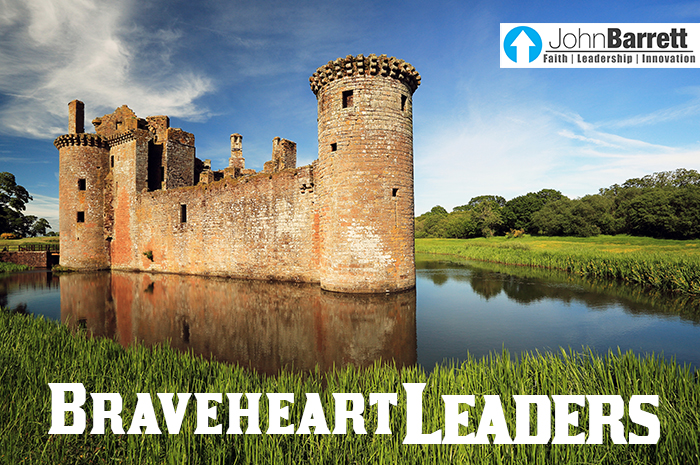
One of my favorite movies, Braveheart, with actor Mel Gibson, shares the story of William Wallace, a nobleman who rose up to fight for Scottish independence from France. There was also a man named Robert the Bruce who fought alongside William Wallace. In the movie, he betrays William, but then later rises up to lead Scotland to freedom. In real history, no such betrayal between the two men ever took place. Robert the Bruce was, however, considered one of the greatest warriors Scotland ever had. After living a hard fought life, he had requested that upon his death, his heart be taken to the Holy Land and carried in the fight against the enemies of Christ. A close friend and fellow warrior, James Douglas, was at his bedside and took on the request. The heart of Robert the Bruce was removed and embalmed and placed in a small container that Douglas carried around his neck. Douglas fought battle after battle with the heart of his king close to his own. In Douglas’ final battle against the Moors (the battle that would ultimately take his life), he found himself surrounded by the enemy. Knowing that he would fight to his death, it is said that he removed the heart from around his neck and threw it into the midst of the enemy and shouted, “Onward brave heart, as thou wast ever wont, and Douglas will follow thee or die.” To this day, there is a plaque in Teba, Spain to honor the bravery and service of James Douglas.
Onward is the language of a leader. They desire action that will not only make a difference, but also have a significant impact in the lives of others. Leaders are always looking forward to a greater future, and are driven by the idea that what they do matters. Marcus Buckingham said, “I am not satisfied” is the mantra of a leader. As a leader, you are never satisfied with the present, because in your head, you can see a better future, and the friction between the ‘what is’ and the ‘what could be’ burns you, and stirs you, and propels you forward. This is leadership.”
To make an impact, a leader must understand how to give a call to action with purpose. Here’s how…
1. Start With Why
For every action there must be an equal purpose. When people understand the “why” the will be willing to do the “how.” Whenever you want to motivate and stir others to action make sure your requests are always attached to a strong reason. The stronger the reason, the higher the commitment you’ll get from others.
2. Be Clear
Be clear about what you are asking when it comes to motivating others. The foggier it is, the less people are inclined to respond. Make your requests specific and clear. Do not be afraid to make big asks’. This means you have to let others know exactly what you want and hold nothing back. Never be fearful of setting the stakes high when it comes to getting others involved. If fact, people respond even more when they feel needed.
3. Make It Bold
Playing it safe is one of the riskiest places to be. To move people forward and stir others to action requires you to make bold moves at times. Believe big and push further. Never allow your discouragement or fear keep you from the potential of your cause. Don’t retreat because it is the safe thing to do. Make bold moves that are strategic and purposeful.







Please note: I reserve the right to delete comments that are offensive or off-topic.